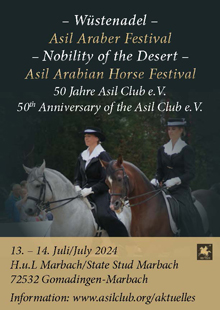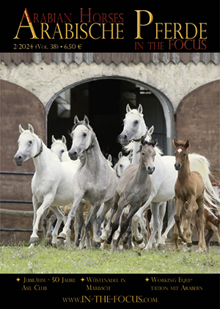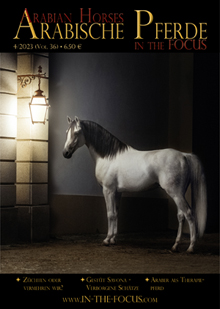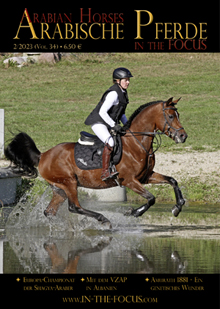As an amateur with regards to Arabians, author Iris Wenzel has already gone to smaller breeding shows in Germany to get an impression of the scene. The highlight of her venture was undoubtedly the visit to the World Championships in Paris in December 2019. In the following article she gives an impression of this event from the perspective of a rider.
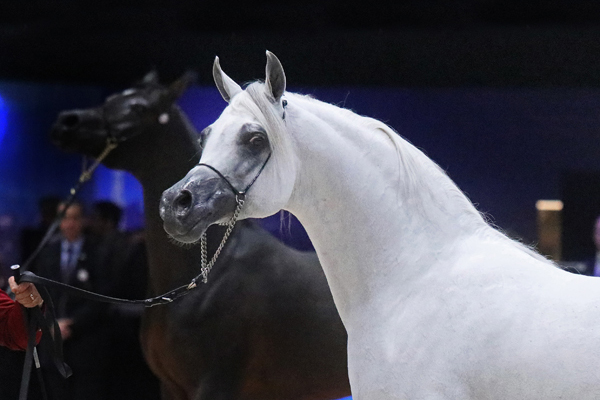
Showmanship & honesty
Personally, I am an active breeder of show jumpers, and a great advocate of sport horse breeding and performance selection. Therefore my attitude towards the show scene is rather skeptical. Just to be pretty without performing, what is that good for a horse? For me, a horse is a sports partner.
But isn’t it more honest to say from the start that we give good marks for beautiful faces, nice choreography and pulled-up hooves? At least you know where you are. So I wanted to give the whole thing a chance and have a look at it live.
Because the question arises: is it so much different in dressage? Values, such as serenity and tact cleanliness are exchanged for show elements, although the regulations state otherwise. The harmony of the overall presentation is sacrificed to the correctness of the execution. That is much more strange.
If sensible elements such as walk and standing for greeting are put to the test on international level (because otherwise the spectators are bored), one can only say: No real horse man decided that! These are the touchstones of careful and horse-friendly training. Abolishing them (and who knows what will follow?) means that we are moving more and more towards the circus. Then we can correctly title the freestyle as a show. But back to my impressions from the Arab scene.
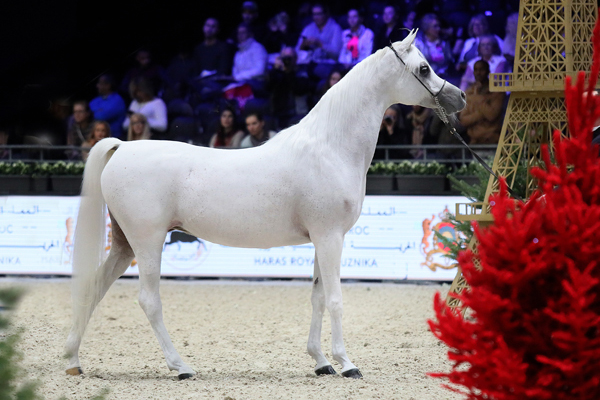
Stand-up
The type of stand-up with a flat topline should look chic, for me I see backs with little load capacity (I think angrily several times that looks like the “bath tub” model). When presenting the horse in motion, tight backs are the rule, swinging through the body does not exist, let alone that one sees swinging tails (but even today you won’t find a broad range of these in dressage). Someone has to explain this to me. The straight croup makes the back look very weak, that’s not something I find desirable as a rider.
But what became clear to me and what I would never have been noticed is that I always considered this stand-up to be an unnatural attitude. That is not correct. If the stallions were allowed to tease each other in a head-on manner, they would then position themselves without exception as required in the performance. So it seems to be a natural imposing behavior.
Why the whole thing appears to be reproduced “in a beautiful shape” only in pain or why this is tolerated in practice is beyond me. The blows with the whip in the direction of the horse’s head and multiple jerks with the thin show halter probably release adrenaline and bad memories, which is necessary for the horses to take the “right” position. I find it strange how omnipresent and open this violence towards horses is shown. I personally do not find the horses in this posture more beautiful, but that’s obviously a matter of taste.
Body weight
For my taste the horses could have been a few pounds less on the ribs. But I assume that it is a protective measure which is important for the long travels and the associated stress for the (mostly) very young horses, so that they do not lose their shape before the show. Overall, however, the horses were in very good physical shape. I have not met really extremely thick or thin horses. Paradoxically, they are then set up so that the silhouette appears narrower.
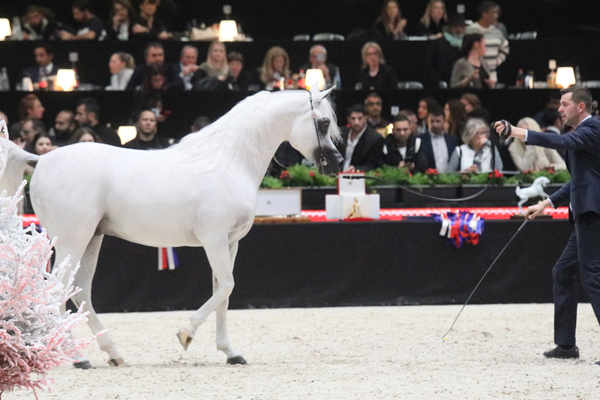

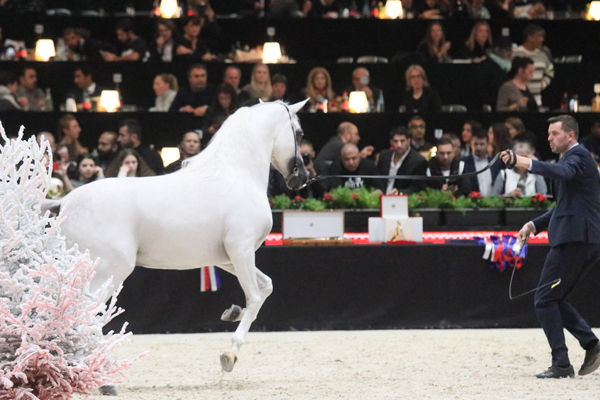
Procedure
The grand stands have been bought. I probably have to explain this because I have never encountered this in equestrian sport or at a licensing: There are claqueurs in the stands that are responsible for applause and the right atmosphere during the presentation of the horses.
When the horse to be supported comes in, a choreography is released from there which is at its finest: with whip rustling and shaking, rumbling with the feet, cries of ecstasy and loud cheers. Our whip rustlers at the breed shows are nothing against this and, above all, extremely poorly coordinated with the handler. This is how you make the standing ovation yourself. So much for the favorite of the audience at the licensing, if the word gets around …
To my great surprise, the World Arabian Horse Championships take place in front of empty seats. If you pull off the many accompanying claqueurs, hardly anyone seems to go live on site. Photographers are still represented. But you won’t find a real audience.
Admittedly, there is a livestream and good reporting, the audience is distributed worldwide, so it may be a bit tedious to travel there. I find it interesting that you don’t see any of the empty seats in the live broadcast because the stands are in the dark. Judging from the background noise in the hall, tens of thousands of viewers of oriental expressiveness should fill the ranks, there is a romp through the (non-existent) crowd that the photographer can never miss his assignment. My ears roar after a few hours, even after I have long left the hall.
But this event has been taking place in Paris every year for almost 40 years, which could be combined with a bit of (Christmas) shopping. Except for the VIP grandstands, there is a yawning emptiness, there is not even catering for the ‘normal spectators’. This is clearly a closed event, despite free admission. Strange.
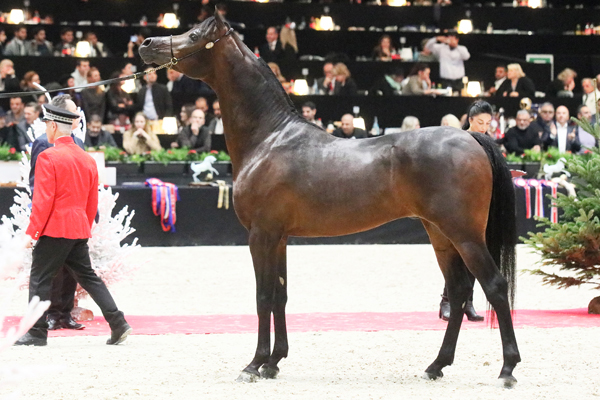
perform certain actions at a sign in order to present themselves optimally to the judges.
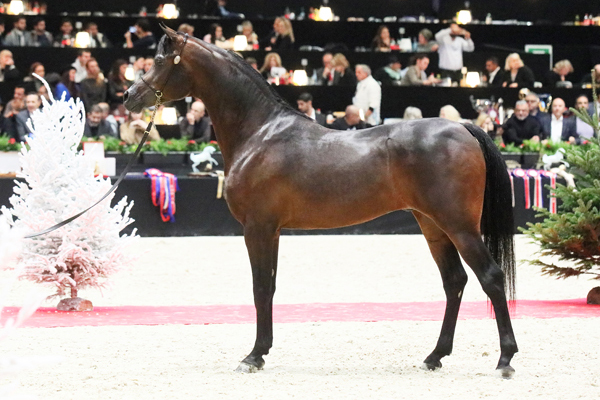
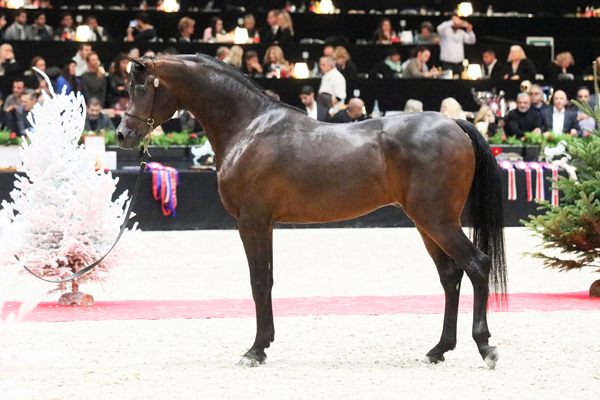
Origin as a war and riding horse
What is interesting for me is the comment that the commentator calls out again and again, which is that originally the Arabian horse would be riding horses that appreciates work and can be used in all different sports disciplines. Significant that there was not even a demonstration to showcase this ability in a suitable way. I didn’t see a single ridden horse that weekend in Paris. I would like more consistency.
Pedigrees
The name and pedigree of the horse are not announced during the presentation so that the judges are not influenced by the origin and ownership of the horse in their assessment. That sounds good in theory and I would really like this for foal shows or even stallion licensing in warmblood breeding.
But in practice, this system has its limits. Because even for me as a non-specialist, the handlers and the background noise were quickly assigned to the corresponding camps. I assume that the judges will also notice this. Especially since there are qualifying classes in which a pre-selection takes place. One can assume that the favorites are simply known.
And even though I do understand how to keep horses apart, it was difficult to keep track of all the white horses especially in the class of senior mares. White obviously stands for maternity and feminity. Who knows, maybe the judges confuses the horses with all the noise and there is objectivity after all?
Negativ
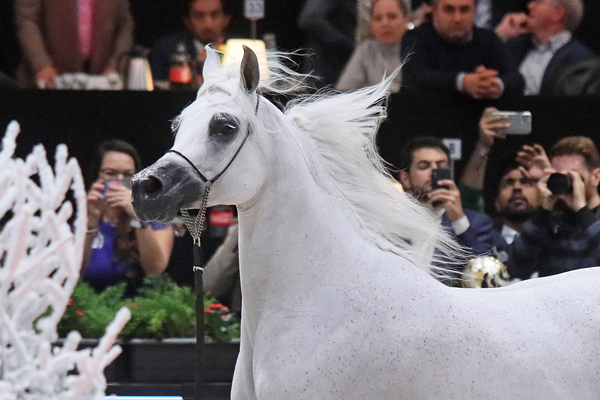
Make up
Make up for horses? Seriously? One can also exaggerate. The heavily clipped horses were (in the best case) rubbed with oil and glittered even in the dark. Now that’s really not my thing.
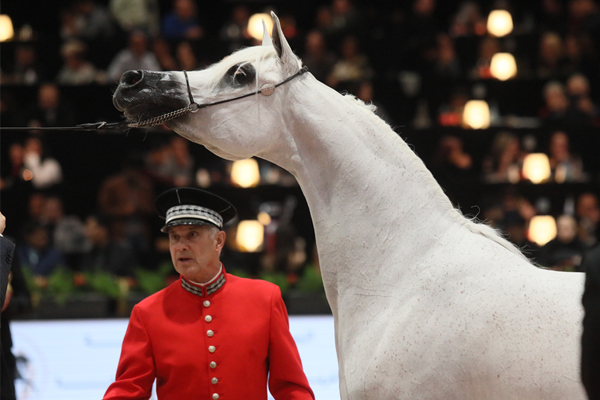
Violence
I really get around a lot. But I have never seen a riding event in which violence against the horse is as present as in the show business. This, exactly where, paradoxically, no real heavy performance is required of the horse, which the animal rights activists always find wrong. Threatening and beating with a raised whip by the handlers in the direction of the horse’s head is common, but no judge or the existing steward (who is active to protect the judges) opposes this.
The violence against the horse is omnipresent and can be read with panic in the eyes of the horses. The rapid change between relaxation and tension that these horses perform is remarkable. They know exactly when there is a break and can be dozed and when not.
I see a lot of well-trained horses who perform certain actions at a sign in order to present themselves optimally to the judges. Also rehearsed tricks that should look like wild resistance but are still strongly choreographed.
I think several times that these horses are treated like royalty by their owners because they have a high monetary value, but the attachment to them is only superficial.
Positiv
The dance
The choreography in the performance of the horses was remarkably good in some cases. The dance with the horse, also occasional praise and petting of the horses takes place. I can confirm the claim that Arabian horses have a very friendly approach to humans, otherwise there would be more resistance here. Every prancing and rearing is heavily choreographed and rehearsed, there is nothing wild here even if it gives a wild appearance. Prancing at the hand, provoking the resistance, rearing – all at the behest of the handler and rarely starting from the horse.
But there are still good examples of handlers who understand their work. Who send and take back their horse with the smallest of gestures and invitations, perform a dance with it that follows clear rules. As well as horses that find the rhythm to music and enjoy their performance. Horses that are actively moving through the body are also present.
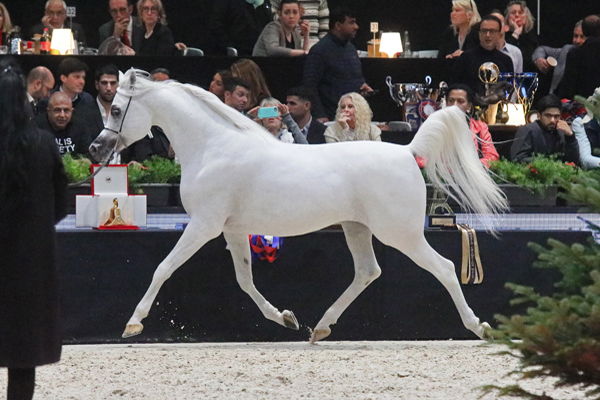
Movements
You don’t win with movements. Or at least the individual scores for head and body are weighted together higher than the quality of movement. I apparently have different opinions than the judges when it comes to assigning the movement scores.
What is commonly referred to as a beat in the warmblood sector is not very pronounced. The horse gets lost in the excitement and that is probably due to his firm back. Most horses step into the ground without a break, which is not very easy on the joints and causes extreme tension on the limbs and back. Cadence is also rarely developed, fast and efficient movements are more required than any far reaching, ground covering movements.
But overall there is a mixed picture in the top rankings. Some of the horses have a very flat but dynamic sequence of movements, others have some ground covering action that is carried more over an active “knee”. What exactly is preferred was not always clear to me.
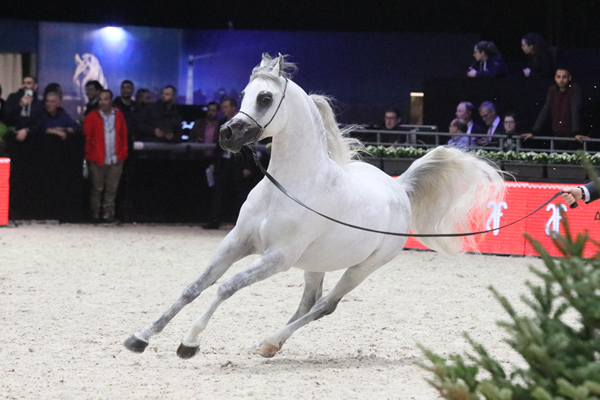
Resilience
Another thing I noticed was that the horses had good grip. You hardly see any slipping or sticking out. I wonder at so few accidents in the tight circles at full speed. The Arabs have a lot of stability even when they show an enormous inclination (optics “motorcycle in the curve”) and are good on their feet. Compared to warmblood horses, this may be due to the lower leverage of the shorter legs. Most horses are only shoed in the front.
Since there is no classic assessment on firm ground, the correctness of the horses (especially given the distance from the large hall) is not easy to assess. But you notice the high dryness of the legs and joints. Apart from the construction, there are hardly any visible defects, I only discover an older horse with capped hocks. Measured against the expected housing conditions without a lot of free running, I find this unusual. Is this due to pre-selection because it is undesirable in competition or is it due to the hardness of the horses?
It is also interesting to note that on a national level I have seen more horses with obvious too long pastern and other defects than at the World Championships. A certain physical hardness seems to be favoured at this level, at least that’s my impression.
Conclusion
Even though my report reads very critically, I’m glad that I got this live impression. It is a separate world. It showed me beautiful horses in a great atmosphere. I was impressed by the dancing presentation of the horses by the world’s best handlers, as well as their feeling for the perfect staging of the horse’s strengths. In addition, there were unfortunately also many ambivalent impressions, because animal welfare should be more present in this discipline.
The ‘show horse’ label is repugnant to many riders and breeders in the warmblood world. However, I was able to discover many parallels to our sport. Maybe the show scene is just more honest in its external image?
Iris Wenzel
The author Iris Wenzel is a warmblood breeder with a focus on show jumpers. She is inclined to the “blood horse” and likes to use English Thoroughbreds in her breeding.
On her ‘Hippothesen Blog’ she puts her ideas and inspirations for new approaches in sport and breeding into words. Some of the topics are also of interest for the friends of the Arabian horse (in German only)!
https://blog.hippothesen.de/inhaltsuebersicht/








